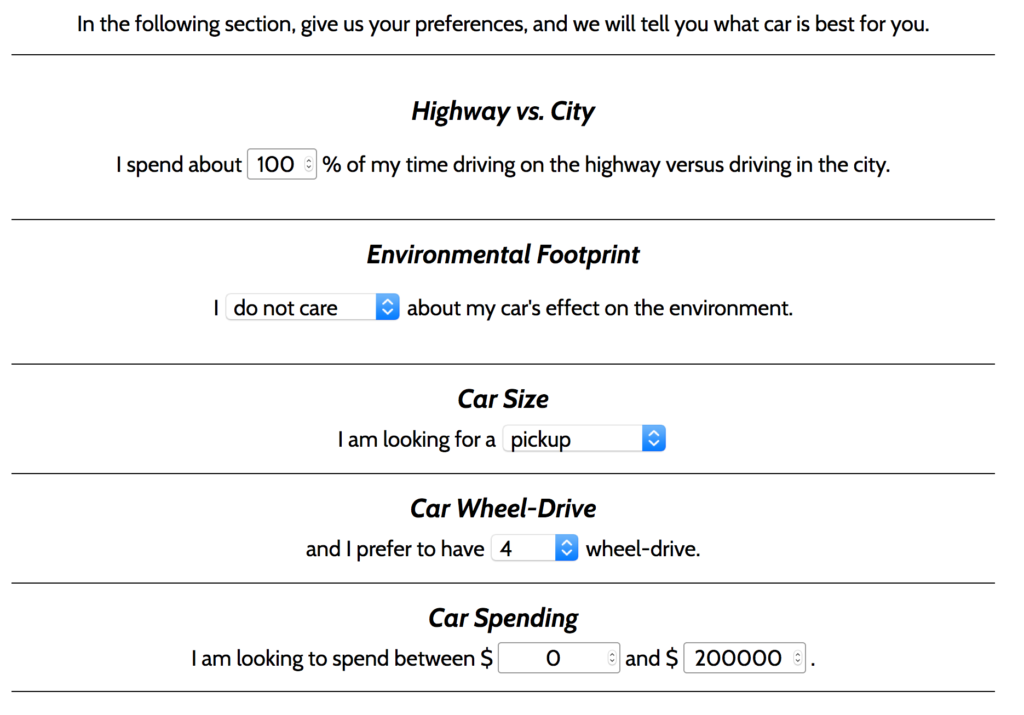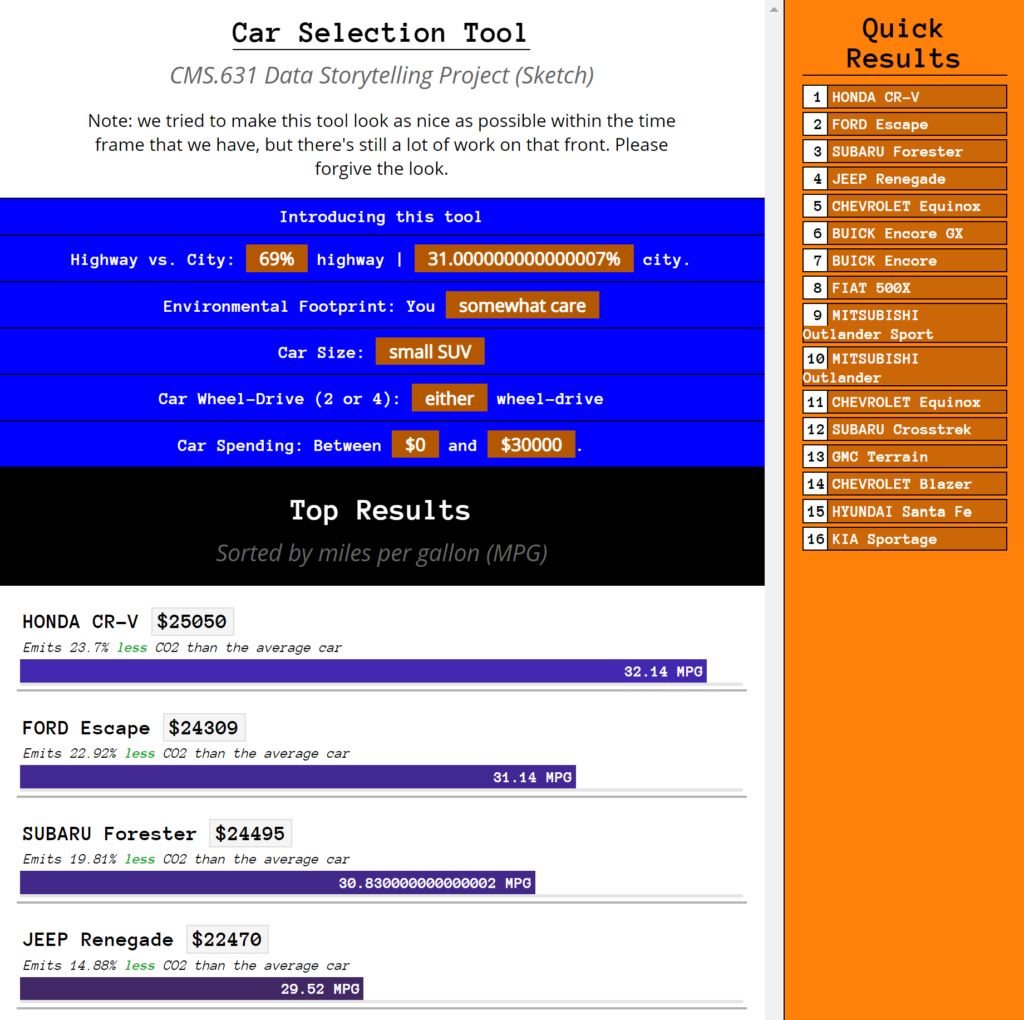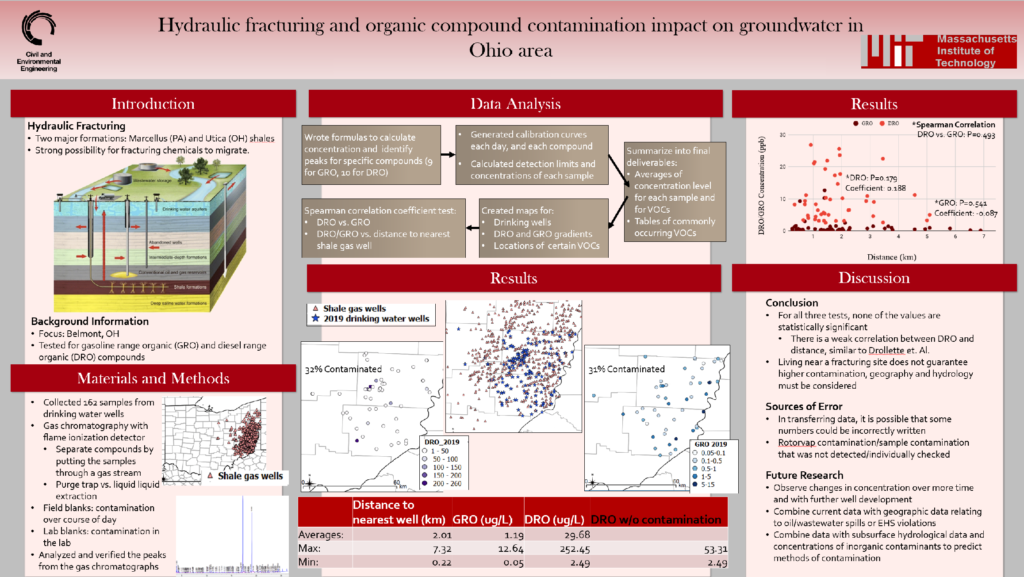Tyler Millis, Robert M. Vunabandi
Background
In our previous project, Fernanda Ferreira, Tyler Millis, and Robert M. Vunabandi created a tool to narrow down car choices based on user preferences. You can find more information in our previous blog post linked here and see our original tool pictured below.

Current Project
Based on the feedback from last time, we overhauled the tool to make it easier to use and the results clearer. This involved walking the user through each preference and then showing the results both on the side and then as a bar graph below. Since we asked the user about their care for the environment and we wanted to make sure to highlight that in the results, we also now show how each car’s pollution relates to the average car’s pollution in order to give some reference. We also simplified the charts below our tool so it now details two environmental scores against car price instead of various charts with multiple encodings.

Our audience for this tool was anyone looking to purchase a car. We envisioned this tool being useful whether you were anyone first-time buyer to a car enthusiast. Ideally, this tool would be used to help someone narrow down which cars they may want to purchase, but if they’ve already selected a few cars and were looking for detailed information, this tool might not be enough for them.
We wanted to test two different types of goals. First, we wanted to test whether our tool made an impact on the user, such as increasing their knowledge on cars or making them think more about which factors they consider when buying a car. Second, we wanted to test the effectiveness of our tool, such as the ability to help users narrow down cars to buy or providing enough information to help them choose a vehicle. In order to test these goals, we created a survey where users would answer questions before viewing the tool and then see how their answers changed after the survey, as well as evaluating the tool generally. We initially planned to roll this survey out in the Class of 2020 Facebook page since a lot of students may be looking to buy cars soon, but realized such a post wouldn’t match the climate of posts happening currently. Instead we reached out to a variety of friends and family, some of whom are thinking of buying a car soon.
You can view our tool here.
Feedback
Our tool seemed to meet our goals, but there is room for improvement. For each of our questions on our survey, we used a 1 through 5 scale, with 1 being more negative, such as “Strongly Disagree,” and 5 being more positive, such as “Strongly Agree.” From our survey, we found that roughly a third of respondents’ understanding of cars increased by one point with the rest staying the same. Forty percent of users felt more confident in the factors they would consider when choosing which vehicle to buy, with an increase in anywhere from one to three points. Roughly twenty percent of respondents had an increased knowledge on cars’ impact on the environment after using the tool, whereas thirty percent felt their understanding had decreased. This was interesting to see, that users felt their understanding had decreased, but it is possible we made them question what they knew about the topic, otherwise we need to make our tool clearer in regards to the environment. In general, users found the tool helpful, thought it had the information to help them choose a vehicle, and thought it was effective, with only a few feeling more neutral or enthusiastic about these metrics.
We also asked our testers about additional information we could provide in the tool and other changes we could make to make it more effective. Eighty percent of users offered additional metrics for cars that would be helpful. These included various features, such as safety, reliability, acceleration, pictures, used versus new, ratings, and more. Unfortunately, most of these were not offered in the data we were working with, but we agree that most of these would be useful to show, but we’d have to think more deeply about how to show so much data without overwhelming the user. Beyond these features, users also thought the UI could use some work. Some users found the colors and result updates distracting, whereas others thought the tool should be more mobile friendly. Some testers also thought that the graphs were intimidating or could use better transitioning, so we might want to think about how we can better simplify these graphs, provide other ways to show the data, or lead into the graphs better.
Overall, we seemed to meet our goals of creating an effective tool and increasing user understanding of the material in our tool, but there is a variety of places we could work on to optimize these goals.


